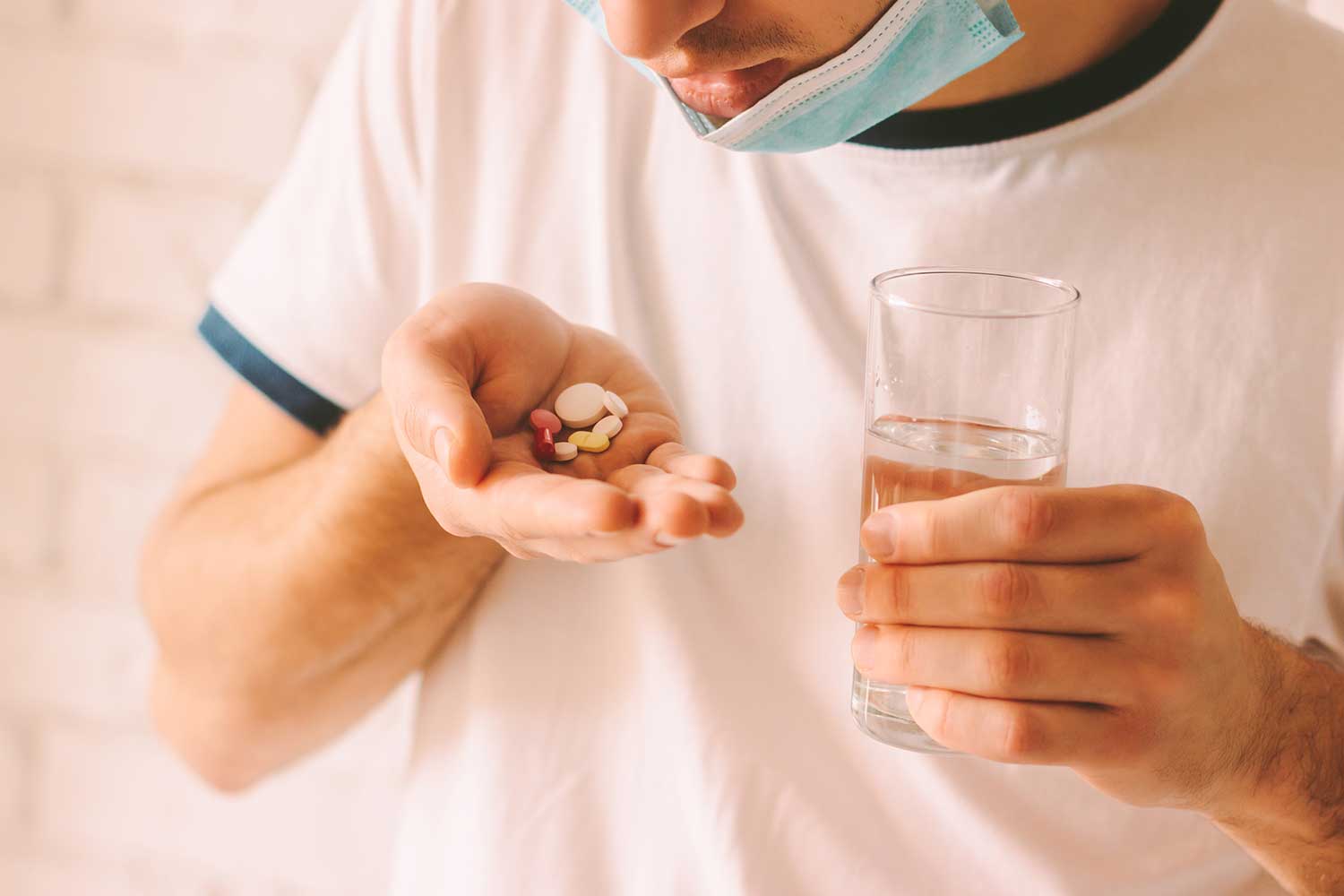The COVID-19 pandemic has taken tens of thousands of lives in the United States and ground the economy to a near-halt. While the focus on this deadly new disease is justified, public health experts warn that another ongoing epidemic has been forgotten. The opioid crisis began more than two decades ago and claimed the lives of 128 people per day in 2018. Now, scientists worry that the coronavirus pandemic will cause an uptick in rates of opioid use disorder.
Scope of the Opioid Crisis Prior to COVID-19
The Centers for Disease Control and Prevention (CDC) describe three waves of the opioid crisis. Beginning in 1999, pharmaceutical companies began aggressively marketing new prescription opioid painkillers. Medications like Vicodin, Oxycontin, and Percocet were widely prescribed to patients for chronic pain and other issues. In many cases, pharmaceutical companies misled physicians about the potential for these opioids to cause physical dependence. As a result, patients came to slowly need more and more of the painkillers to get the same effect.
A patient struggling to control their prescription painkiller use turned to other, more potent opioids such as heroin. This led to the second wave in the opioid crisis, beginning around 2010 as heroin flooded the U.S. market. Finally, in 2013, the third wave of the epidemic began when synthetic opioids like fentanyl became more frequent. Fentanyl is 50 to 100 times more potent than morphine, meaning that a tiny dose can have a considerable effect. Unfortunately, this causes some people to use higher doses than intended, leading to an opioid overdose.
These changes in the availability of opioids caused a steady increase in opioid overdose deaths from 1999 to the present. By 2018, the latest year for which data are available, there were more than 47,000 opioid overdoses in the United States.
Impact of the COVID-19 Pandemic on the Opioid Epidemic
Slow, painstaking work by lawmakers, mental health professionals, and community health advocates has led to a slowing of the opioid epidemic over the past few years. Congress passed legislation to provide money to fight against opioids. Local communities have marshaled resources to increase access to treatment programs. In fact, 2018 represented the first time in nearly two decades that opioid overdose deaths had dropped compared to the previous year. The drop of 4% is small but served an essential first step in this fight.
Now, experts worry that all of that progress may be undone. The COVID-19 pandemic has understandably occupied much of the media attention over the past two months. But scientists and health officials working on the opioid crisis worry that a critical moment is passing. In an interview with Politico, Caleb Alexander, co-director of the Johns Hopkins University’s Center for Drug Safety and Effectiveness, said that we are at an inflection point and about to turn a corner in the fight against opioids. He worries that interrupting our current momentum will cause a backslide.
There are several aspects in which the coronavirus pandemic may interrupt the progress of the fight against opioids. Some of the most prominent concerns are outlined below.
Mental Health Problems Have Skyrocketed
Many people mistakenly think that opioid addiction is about “bad” people unable to control their impulses when it comes to substance use. This couldn’t be further from the truth. In many cases, untreated mental health problems are the root cause of opioid use disorder. People struggling with depression, anxiety, PTSD, and unresolved trauma often experience immense amounts of emotional pain. Poor access to mental health resources and stigma about seeking treatment prevent many people from addressing these problems. As a result, they may turn to opioids to numb their emotional pain. While this provides a good temporary solution, it eventually leads to addiction and a greater emotional struggle.
COVID-19 has exacerbated mental health problems for many people. Staying at home, cut off from work, friends, and family is incredibly tough for many vulnerable people. Plus, more than 14% of the U.S. workforce was unemployed as of early May 2020, fueling depression, anxiety, and hopelessness. This has led to an increase in mental health symptoms that keeps people stuck in a cycle of drug abuse. At the same time, the ability to see psychiatrists and psychologists has been limited. The result is a perfect storm of mental health problems that may drive people back toward opioid use.
Access to Treatment Programs Is Limited
Stay at home policies were enacted across the nation to prevent the spread of COVID-19. One of the unfortunate consequences of these policies is restricted access to opioid treatment programs. Many inpatient and residential treatment centers stopped or reduced services as their resources were converted to care for coronavirus patients. Peer counseling and support groups can no longer meet in person, and virtual meetings have major privacy concerns. Medication-assisted treatment programs have scaled back operations. Syringe exchange programs have also stopped in many places, concerned about the possibility of patrons passing COVID-19 to one another.
It’s unclear what the future will hold, but coronavirus precautions will almost certainly include some form of social distancing for months or even years. This means that treatment programs may have to radically change how they operate. Even a temporary interruption in these services could have severe consequences for people in need. Already, Montgomery County in Ohio has reported a 50% increase in opioid overdose deaths, a figure that could jump to 100% once autopsies are complete. Officials in Florida, New York, Pennsylvania, and Texas have also reported significant spikes in opioid-related deaths during the coronavirus pandemic. Clearly, a public health response needs to continue to provide services to the most vulnerable while keeping them safe from infectious diseases.
Higher Risk for COVID-19 Complications among People with Opioid Use Disorder
Men and women of all ages, racial/ethnic groups, and socioeconomic backgrounds are affected by COVID-19. While older people and those with certain health conditions are most vulnerable, even younger people have been hospitalized and died from the virus. Scientists are still trying to determine what places certain people at higher risk of complications from coronavirus. Opioid abuse appears to be one of those risk factors.
Opioids are a central nervous system depressant, meaning they slow down functions like breathing. Chronic opioid use can lead to poor lung functioning. Because COVID-19 affects the lungs and breathing ability, people who use opioids may be at higher risk. Scientists are still trying to determine the complex relationship between opioid use and COVID-19, but the opioid epidemic could place thousands of people at risk of coronavirus-related death.
A Freeze on Nationally Funded Opioid Research
The National Institutes of Health have frozen most research not directly related to coronavirus. This includes billions of dollars allocated to studying opioid and other drug addiction. One of the most striking casualties from this list is a $1 billion project designed to identify opioid alternatives and treatment options. This was a hallmark piece of the Trump Administration’s plan to combat opioids in the U.S. It remains to be determined when this research will resume again. Even regular collection of information about substance use and death rates has been put on hold in some areas, creating gaps in our knowledge about the extent of the opioid crisis.
How to Fight Against Opioids Amidst the COVID-19 Pandemic
Now more than ever, we need a coordinated public policy to address the diverse health threats facing our nation, including opioids as well as the COVID-19 pandemic. Rather than diverting funds from existing programs to fund COVID-19 relief efforts, it is essential to view these as intersecting problems. People suffering from opioid addiction do poorly under social isolation, fear losing access to addiction treatment programs, and may even be more vulnerable to complications of COVID-19. Clearly, the opioid crisis and coronavirus epidemic are twin goals with some overlap in their solutions.
Now that the initial wave of COVID-19 cases has passed, it is time to create a long-term strategy to deal with these two epidemics. The COVID-19 pandemic will be time-limited, as scientists believe that we will develop a vaccine or herd immunity (a critical number of people who have had the disease and thus have antibodies that confer immunity, limiting its spread) within a year or two. The opioid epidemic has been raging for far longer, more than two decades. Health officials worry that if we take our eyes off the opioid epidemic while fighting coronavirus, we will undo all of the fragile progress we have made. This could lead to hundreds of thousands more people dying of opioid-related causes over the next few years.
Addiction recovery advocates have asked the administration to designate $50 billion in emergency funds to address the opioid crisis. They note that without this additional support, access to treatment programs will only worsen during the pandemic. It is essential that this money is used to increase access to treatment programs that work. Medically assisted detoxification programs such as the Waismann Method take place within a full-service hospital. These types of programs are critical in helping people achieve detoxification in a safe, private environment where appropriate COVID-19 precautions can be taken. With foresight and planning, we can mount a coordinated health response to contain the spread of coronavirus and reduce losses due to opioid addiction.














